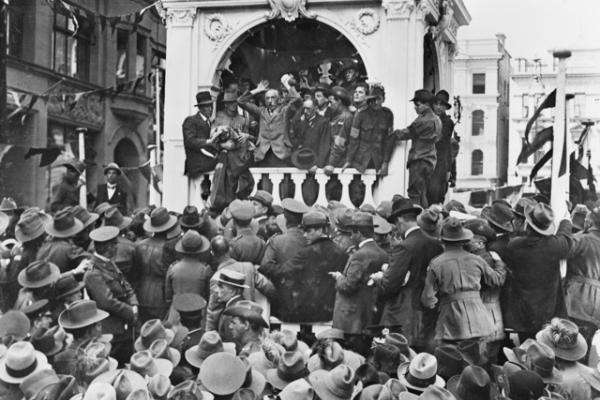The Lauder family
At the outbreak of the First World War in 1914, just over 1,000 Australians lived in the small community of Darwin. Sid Lauder was born on Thursday Island but later moved to the city with his parents, his brothers Arthur, William, and Charles, and sister Olive.
In April 1915, 17-year-old Sid was working for the post office delivering telegrams when he heard the news that Australian troops had landed on the Gallipoli peninsula. Within six months, he had volunteered for active service and set sail to join the campaign against Turkey.
Despite being six months shy of his eighteenth birthday, Sid claimed to be old enough to enlist. For “boy soldiers” such as Sid, joining the army seemed like an exciting opportunity to travel overseas, earn a decent wage, and prove their worth as men.
After the allies were evacuated from Gallipoli in early December 1915, Sid spent Christmas on the nearby island of Lemnos, enjoying plum pudding and other treats from home. Before long, he was on the Western Front, helping to dig through the mud to extend the already enormous network of trenches that stretched across France and Belgium.
In mid-July 1916, Sid was admitted to hospital in England with a gunshot wound to his back. As more and more reports of casualties reached Australia and the most seriously wounded began to return home, the numbers of those willing to volunteer began to decline.
Around this time, rallies and marches began to take place across Australia to encourage eligible men to enlist. The government also started to discuss whether it was appropriate to introduce conscription, which would compel men to serve overseas. The issue divided the Australian community and after two referendums on the issue, both of which were narrowly defeated, enlistment in the army remained voluntary.
While Sid was recovering from his injuries, his older brother, Arthur, began training for overseas service. Arthur had been assigned to the same battalion as Sid, and in early 1917 they both marched into action on the Western Front. Sid was again wounded and found himself back in hospital in England.
Sid rejoined his battalion for the final time in late 1917 as what later became known as the Third Battle of Ypres was drawing to a close. The allies had hoped to drive the Germans from the surrounding ridges and reach the Belgian coast, but the four-month-long campaign was marked by fierce fighting and massive casualties.
Within eight weeks, 38,000 Australian troops had been reported killed, wounded, missing or captured. Among their number was Sid, who was killed in action on 30 October. He was 19.
Sid was buried in Aeroplane Cemetery, Ypres, near where he fell. Arthur survived the war, returning home to the Northern Territory in early 1919. The loss of Sid was deeply felt within the Darwin community, and a plaque to his memory was later unveiled in a local church.

